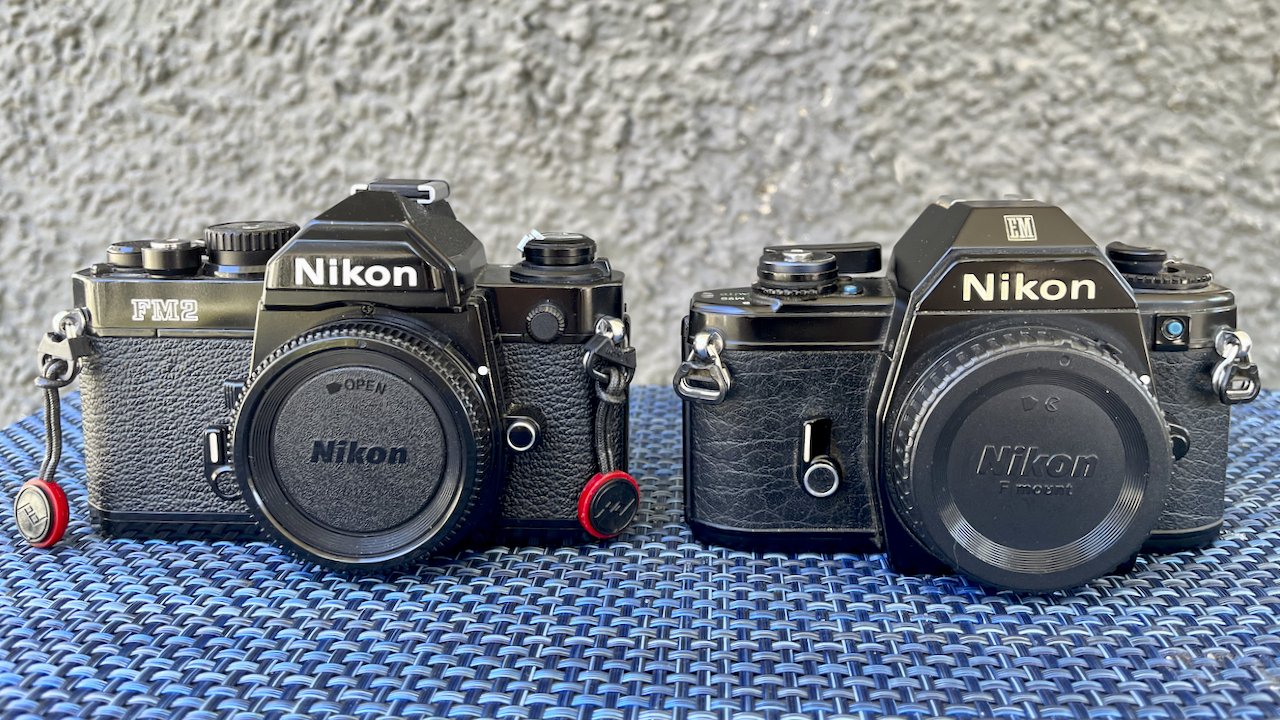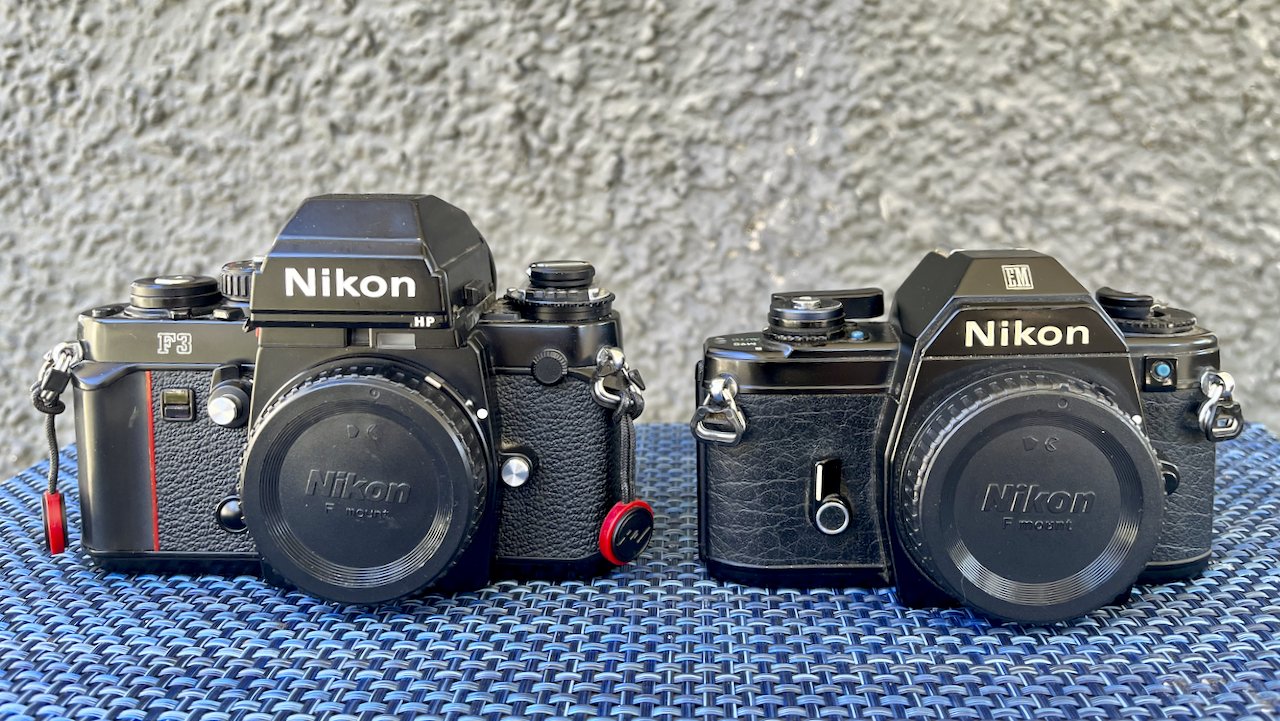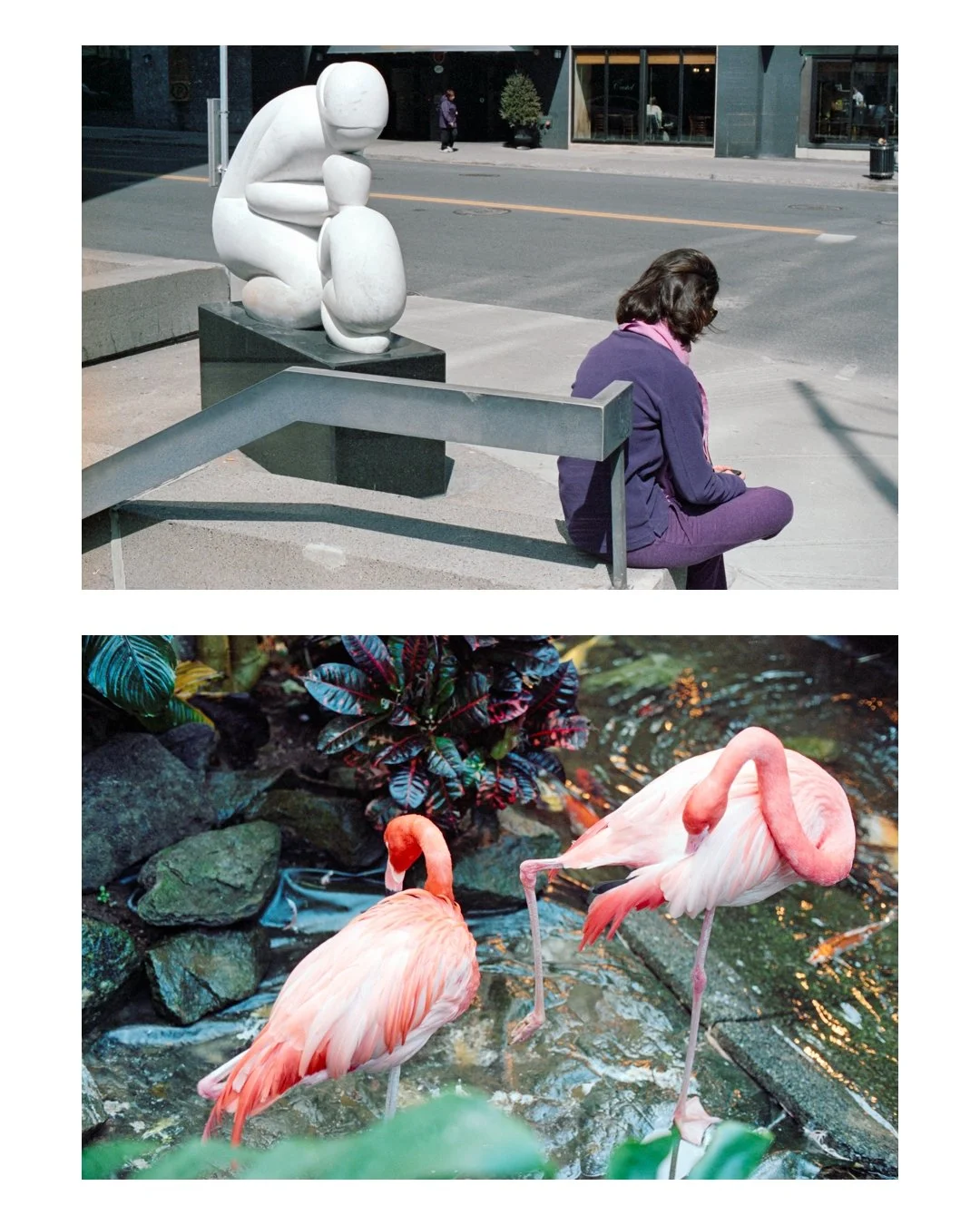Nikon EM – The Story of a Camera
This is not a review. This is the story of a camera. Not of a camera make and model, but of a particular camera in the world, a camera that made its way by route and hands unknown from Japan to sub-Saharan Aftica, a camera that found itself amidst the history of a country in turmoil, a camera that touched the life of my family. This is a story of life after death. And it’s an unfinished story that I intend to keep telling for the rest of my days.
My father’s Nikon EM, mounted with a 35 mm f/2.5 E series lens. Not clearly visible in this photograph is the fact that the rewind crank is missing.
Harare, Zimbabwe (1980-2000)
My father, David Bruce Jones, circa 1980s.
Shortly after the odious Government of Zimbabwe printed the world’s first one trillion dollar note, the people rejected the currency. The banking system collapsed. The country reverted to barter and to cash–crumpled, tattered US dollar bills, passed reluctantly from hand to hand, from pocket to pocket, as the deeply wounded society scrambled to survive. But long before our sub-Saharan paradise was devastated by avarice, incompetence, thuggery, racism, mendacity and hyperinflation, my father founded a printing and publishing company in the capital, Harare. It was called “The Pangolin Press”–after the scaly ant-eater, which is indigenous to the area and revered by local people for its mystical powers. One of the company's first purchases was a used Nikon EM (serial number 6200810)–worth, when the last Zimbabwean dollar was printed, less than one percent of one percent of one percent of a US cent.
As the smallest and cheapest single lens reflex camera ever made by Nikon, the EM represented a strategic diversification of the company's product line away from the saturated professional market where competition between the major Japanese manufacturers was intense during the mid-seventies and eighties. Released in 1979, the EM was to embody a sense of style, convenience, ease of use, and low cost–all wrapped up in the Nikon mystique and prestige. It proudly sported the crowning pentaprism embossed with the Nikon logo, and was targeted to female photo enthusiasts just then entering SLR buyers' market.
The Nikon EM is a basic camera with a feature set that sacrifices versatility for ease of use. Nippon Kogaku certainly did not intend it to be used in the field by professional photographers, but managers and engineers in Japan naturally had no concept of the difficulties facing journalists in former British colonies in southern Africa. In Zimbabwe in the 1980s, the lowly EM was a serious camera. Over the course of 20 years, my father published magazines, trade newspapers, and corporate annual reports. He wrote press releases and print advertising copy. And during all of this time he depended solely upon the faithful EM and a small clutch of lenses for each and every picture.
For our tiny company, every dollar counted, and my mother meticulously counted them all. To save a few, my father imported 35 mm film in 50 foot rolls from South Africa, which at that time was the only place from which exotic items like camera equipment and toothpaste could be sourced. The film came in large, light tight, stainless steel containers that he stored in the family refrigerator. Whenever necessary, Dad took these into the windowless corridor that ran through the centre of the house. This was our improvised dark room. Before opening the containers, he wedged towels under the doors to keep out stray light, and then, by feel alone (we didn't have a bulk loader), he painstakingly spooled approximate 36-exposure lengths onto waiting spindles that he assembled into standard film canisters. Before coming out into the light, he carefully resealed the containers with several layers of heavy black electrical tape. This was my early relationship to film: sitting on the parquet floor in the darkness with my father, scissors in hand, waiting patiently to cut on his command.
When I was 17 years old, I took the EM with me to school to document the last idyllic days before graduation. With a sense of pride that I should be the one to capture these final moments, and great excitement, I peered through the viewfinder to record the grinning faces of my friends as they posed and cavorted in all our favourite places on the campus. These photographs I store only in my memory; they do not exist in reality because the roll of film on which they were captured was stolen along with my father’s briefcase from the back of his motorcycle somewhere in downtown Harare. And yet it was in taking them that I first felt the tug of photography, first sensed that something magical was inherent in the medium. In 1992, I left my childhood home pursue a degree in chemistry at the University of British Columbia in Vancouver, Canada. I left with the impression of my father’s Nikon in my hand, though I did not turn my attention back to photography until a decade later, when I bought an F65 and began to document my life as a post-doctoral fellow in Edmonton, Alberta.
My father's eventual transition from analog to digital was inevitable, like those of every other craftsman in the words and pictures business. But he did not go willingly. Even into the mid-90s, he was still noisily pounding out two-fingered copy on a Remington Rand typewriter that dated approximately to the forties and taking interview notes in shorthand. But after long and trouble-free service, the EM's light meter finally died and the rewind crank was broken in a fall. The camera needed to be replaced. Change was gradually and inevitably coming to the wider industry, even in Zimbabwe which throughout my childhood seemed to me a backwater and impervious to development. In our tiny local publishing industry, typesetters were abandoning light tables, fine-tipped pens, rulers, scalpels and glue for desktop publishing systems. And so it was that my father eventually graduated from the Remington to the Notepad application that came bundled with Windows 95, and several years later from the EM to an Olympus digital SLR. The long-faithful Nikon was lovingly wrapped into its case, tucked away at the back of a cupboard, and forgotten for two decades.
The Nikon EM
The EM was an inexpensive, ultra-compact, electromechanical, manual focus, 35 mm SLR camera introduced to international markets by Nippon Kogaku (later Nikon) in 1979. Its Japanese debut came in 1980 simultaneously with the F3. The EM was succeeded in 1982 by the FG.
The EM was equipped with a silicon photodiode that enabled a 60:40 centre-weighted, through-the-lens light metering system, which was critical for its normal operation: the camera was designed to be used almost exclusively in aperture-priority automatic mode (labelled “AUTO” in green lettering on the three-way selector switch beneath the film advance lever.) It offered no manual control over shutter speed other than 1/90 s (labelled “M90”), which provided a fall-back to the photographer should the required batteries expire, and bulb (“B”). In the absence of battery power, the shutter would fire at approximately 1/1000 s, if the camera were left in AUTO mode.
For a budget camera, the EM had a remarkably large viewfinder, though it was noticeably dimmer than those found in the semi-professional and professional models then offered by Nikon. The only pieces of information presented in the viewfinder were the camera’s auto-selected shutter speed, indicated by a needle scale on the left hand side, and the flash-ready light at approximately the 1/90 s mark on this scale. In dim scenes, the scale was difficult to see. Red zones at the top and bottom indicated over and under exposure, respectively, while red numerals in the 1 s - 1/30 s range warned the photographer of probable motion blur resulting from camera shake if the photograph were taken hand-held. The EM beeped as an additional, audible warning any time the shutter speed needle entered a “red zone.”
The EM’s focussing screen was not interchangeable. For focusing, the EM presented a central, circular split-screen, surrounded by a micro-prism collar. The larger outer circle indicated the central zone of the frame that the metering system would favour for proper exposure.
The EM lacked an exposure compensation control dial. However, it did offer an option for over exposure by a fixed increment of two stops. If the subject were strongly back-lit (underexposed) the photographer could correct this by depressing a small button on the left-hand face of the camera while taking the picture. This would cause over exposure by two stops, e.g., by reducing the shutter speed from 1/250 s to 1/60 s.
The vertically-travelling focal-plane shutter was electronically controlled and capable of speeds ranging from 1 s to 1/1000 s. Film sensitivity could be set in the range of 25-1600 ASA/ISO. The camera was equipped with a hot shoe and a self timer. It was not fitted with a depth of field preview, or mirror lock-up.
The EM owes its form to the Italian industrial designer Giorgetto Giugiaro, who is most famous for his prolific work on automobiles. (He was named the Car Designer of the Century in 1999.) Though his association with Nikon began with the EM, Giugiaro is best known in the camera world for his design of the F3, which was released in the following year and was the first Nikon camera to sport the now iconic red stripe (possibly as a nod to Giugiaro’s work with Ferrari.) Giugiaro obviously collaborated well with Nikon’s development team because the EM, while inexpensive and fabricated from lower quality materials than contemporary Nikon cameras, feels solidly built, well balanced, and comfortable in the hand, though perhaps a little too small for me. The EM’s pentaprism has a lower profile than those of the FM and FE, and the camera’s overall shape is sleeker. I find it to be quite an elegant little camera that is a pleasure to use.
The images below show size comparisons between the Nikon FM2 and EM (top), and Nikon F3 and EM (bottom). Not evident in these photos is the fact that the EM incorporates many more plastic components than the FM2 and F3, which means that the camera is not only smaller but also noticeably lighter than the other two. Writing in Nikkor Club Quarterly magazine, Kenji Toyoda reported that “developing the EM greatly improved the company's production capabilities, including better use of plastics for exterior parts. The Nikon FM and FE had used engineering plastics on the apron and name plate. With the EM, the top and bottom cover were also made of plastic, thereby reducing the cost and complication of making these parts.”
Alongside the introduction of the EM, Nikon unveiled a new line of less expensive, consumer oriented lenses, known as the E Series. This line-up contained five new primes (a 28 mm f/2.8, 35 mm f/2.5, 50 mm f/1.8, 100 mm f/2.8, and 135 mm f/2.8) and three zoom lenses. My father’s EM came with the 35 mm f/2.5 (pictured above, mounted to the camera.) Another two (the 50 mm and 100 mm) came with an FE that I bought a couple of years go. The three that I now own are shown below for comparison. The 50 mm lens (at left) has a metallic collar that echoes the design of true Nikkor lenses; this distinguishing feature was added in the second iteration of the E series to make the lenses look a little more professional.
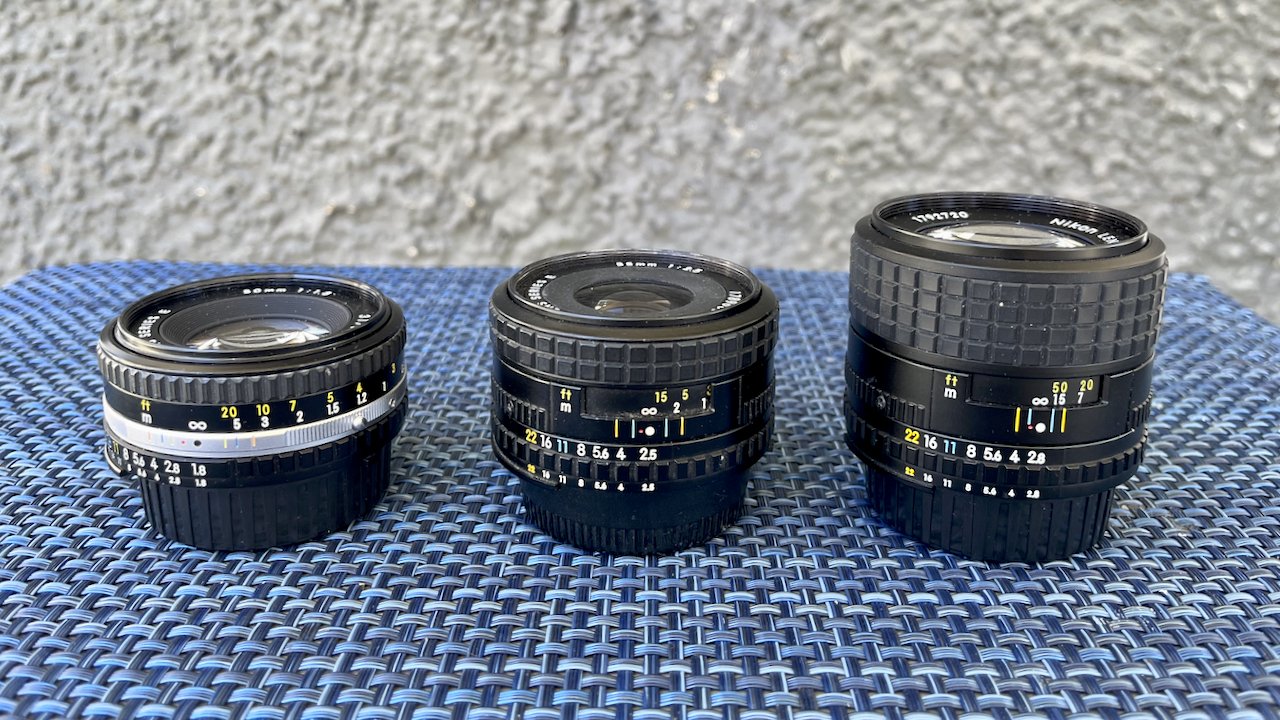
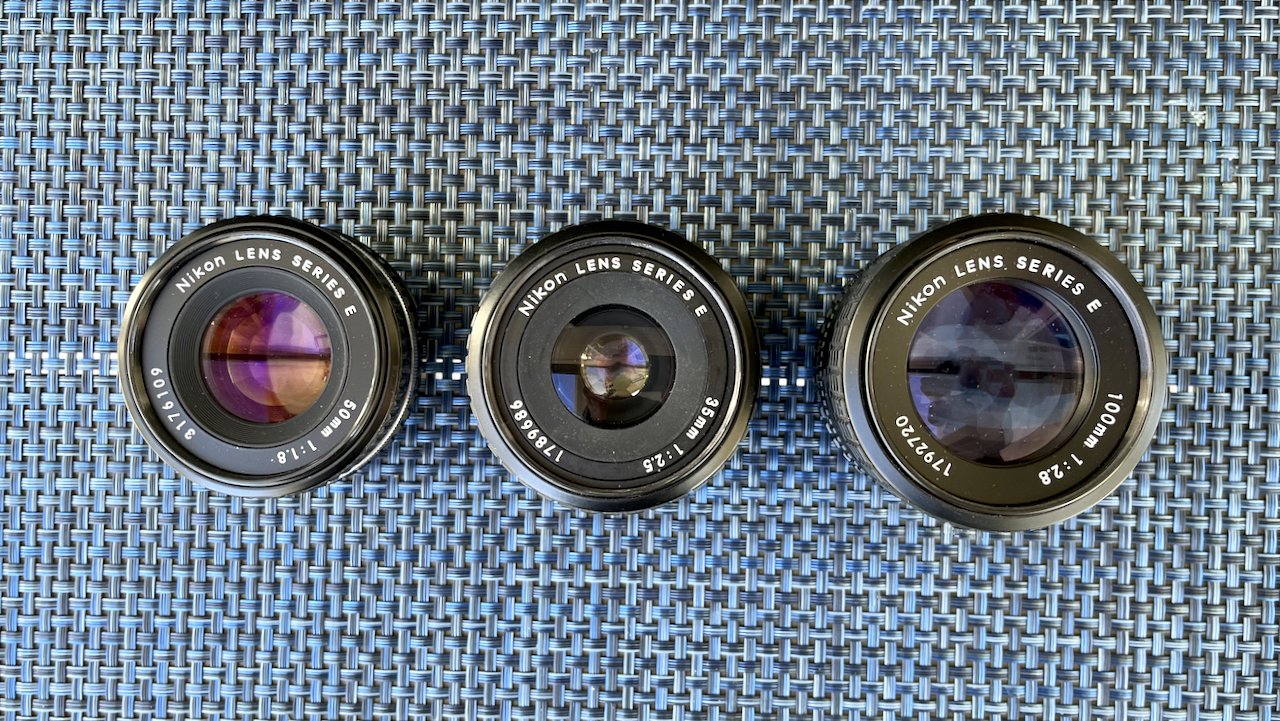
Vancouver (2024)
My father died in Gaborone, Botswana, on the 26th of January, 2024, and I inherited the EM. I brought it home to Vancouver after the funeral and resolved to restore it to fully functional condition. I have ordered an inexpensive, working EM from eBay. When it arrives, I will ask Bir at Vancam to harvest the necessary parts and restore my father’s camera. I do not yet know whether this will be successful, or even if it is feasible.
I will continue to document the project here.



